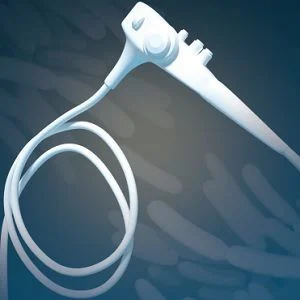Infections from flexible endoscopes, missed alarms, and opioid-related deaths are the top health technology hazards that hospitals and clinicians have to deal with in 2016, according to a new report from the ECRI Institute. The group recently released its annual top-10 list of technology hazards to help hospitals prioritise technology safety efforts that warrant their attention and to reduce risks to patients.
The list is not a ranking based simply on the volume of problem reports received by the group, or their severity. "Rather, the list reflects our judgment about what risks should receive priority now," ECRI said.
To develop the annual list, ECRI's multidisciplinary staff of scientists, engineers, physicians, nurses, and safety analysts draw on the resources of the Institute's nearly 50-year history, as well as expertise and insight gained through testing and analysing healthcare technologies.
The Top 10 List for 2016:
1. Inadequate Cleaning of Flexible Endoscopes before Disinfection Can Spread Deadly Pathogens
Instruments must be cleaned of biologic debris and other foreign material; if this precleaning is not carried out effectively, the disinfection step may not be effective.
2. Missed Alarms Can Have Fatal Consequences
Appropriate personnel must be able to recognise and respond to actionable clinical alarm conditions in a timely manner to avoid patient injury or death.
3. Failure to Effectively Monitor Postoperative Patients for Opioid Induced Respiratory Depression Can Lead to Brain Injury or Death
Intermittent spot checks of oxygenation and ventilation every few hours are inadequate for reliably detecting opioid-induced respiratory depression. To address this problem, a healthcare facility should implement the relevant recommendations from the Anesthesia Patient Safety Foundation (APSF) and the Joint Commission.
4. Inadequate Surveillance of Monitored Patients in a Telemetry Setting May Put Patients at Risk
One factor contributing to this problem is the incorrect assumption that monitoring systems can reliably detect all potentially lethal arrhythmias. Staff should be educated about the limitations of monitoring technology and the factors that could lead to missed events.
5. Insufficient Training of Clinicians on Operating Room Technologies Puts Patients at Increased Risk of Harm
ECRI estimates that nearly 70 percent of accidents involving a medical device can be attributed to user error or the technique of use. Many of these incidents could have been avoided if users had a better understanding of the instructions for use and device operation.
6. Errors Arise When HIT Configurations and Facility Workflow Do Not Support Each Other
One way to address this problem is to modify workflows so that they align with the capabilities of a health IT (HIT) system.
7. Unsafe Injection Practices Expose Patients to Infectious Agents
Some practices that put patients at risk are: reusing a needle or syringe, sharing an insulin pen among patients, and using a single-dose medication vial for multiple patients. Solutions involve action by both healthcare workers and patients.
8. Gamma Camera Mechanical Failures Can Lead to Serious Injury or Death
Facilities should advise staff not to leave patients unattended in the gamma camera scan room. They should also maintain, service, and inspect gamma cameras in accordance with the manufacturer’s guidance.
9. Failure to Appropriately Operate Intensive Care Ventilators Can Result in Preventable Ventilator-Induced Lung Injuries
These issues can be alleviated by ensuring that all staff involved with mechanical ventilation have a sound understanding of the devices and their use.
10. Misuse of USB Ports Can Cause Medical Devices to Malfunction
Possible problems include instances in which the device shuts down (ie, the patient does not receive therapy) or the device settings are changed (ie, performance is compromised). These highlight the importance of having a policy on the appropriate use of USB ports on medical devices.
Source and image credit: ECRI Institute
The list is not a ranking based simply on the volume of problem reports received by the group, or their severity. "Rather, the list reflects our judgment about what risks should receive priority now," ECRI said.
To develop the annual list, ECRI's multidisciplinary staff of scientists, engineers, physicians, nurses, and safety analysts draw on the resources of the Institute's nearly 50-year history, as well as expertise and insight gained through testing and analysing healthcare technologies.
The Top 10 List for 2016:
1. Inadequate Cleaning of Flexible Endoscopes before Disinfection Can Spread Deadly Pathogens
Instruments must be cleaned of biologic debris and other foreign material; if this precleaning is not carried out effectively, the disinfection step may not be effective.
2. Missed Alarms Can Have Fatal Consequences
Appropriate personnel must be able to recognise and respond to actionable clinical alarm conditions in a timely manner to avoid patient injury or death.
3. Failure to Effectively Monitor Postoperative Patients for Opioid Induced Respiratory Depression Can Lead to Brain Injury or Death
Intermittent spot checks of oxygenation and ventilation every few hours are inadequate for reliably detecting opioid-induced respiratory depression. To address this problem, a healthcare facility should implement the relevant recommendations from the Anesthesia Patient Safety Foundation (APSF) and the Joint Commission.
4. Inadequate Surveillance of Monitored Patients in a Telemetry Setting May Put Patients at Risk
One factor contributing to this problem is the incorrect assumption that monitoring systems can reliably detect all potentially lethal arrhythmias. Staff should be educated about the limitations of monitoring technology and the factors that could lead to missed events.
5. Insufficient Training of Clinicians on Operating Room Technologies Puts Patients at Increased Risk of Harm
ECRI estimates that nearly 70 percent of accidents involving a medical device can be attributed to user error or the technique of use. Many of these incidents could have been avoided if users had a better understanding of the instructions for use and device operation.
6. Errors Arise When HIT Configurations and Facility Workflow Do Not Support Each Other
One way to address this problem is to modify workflows so that they align with the capabilities of a health IT (HIT) system.
7. Unsafe Injection Practices Expose Patients to Infectious Agents
Some practices that put patients at risk are: reusing a needle or syringe, sharing an insulin pen among patients, and using a single-dose medication vial for multiple patients. Solutions involve action by both healthcare workers and patients.
8. Gamma Camera Mechanical Failures Can Lead to Serious Injury or Death
Facilities should advise staff not to leave patients unattended in the gamma camera scan room. They should also maintain, service, and inspect gamma cameras in accordance with the manufacturer’s guidance.
9. Failure to Appropriately Operate Intensive Care Ventilators Can Result in Preventable Ventilator-Induced Lung Injuries
These issues can be alleviated by ensuring that all staff involved with mechanical ventilation have a sound understanding of the devices and their use.
10. Misuse of USB Ports Can Cause Medical Devices to Malfunction
Possible problems include instances in which the device shuts down (ie, the patient does not receive therapy) or the device settings are changed (ie, performance is compromised). These highlight the importance of having a policy on the appropriate use of USB ports on medical devices.
Source and image credit: ECRI Institute
Latest Articles
healthmanagement, technology hazards, health IT, medical devices, ventilation, patient safety, pathogens
Infections from flexible endoscopes, missed alarms, and opioid-related deaths are the top health technology hazards that hospitals and clinicians have to deal with in 2016, according to a new report from the ECRI Institute.










